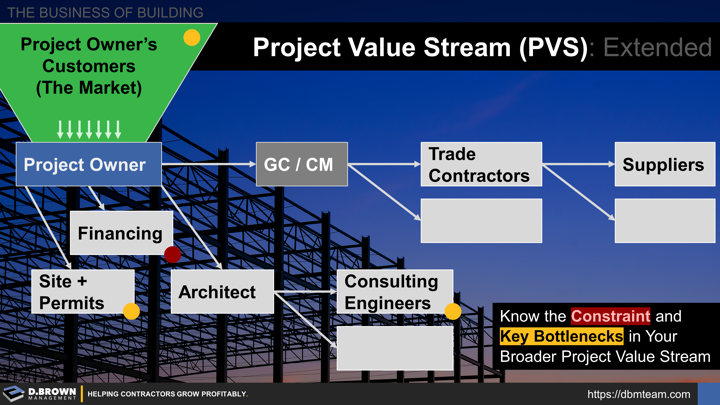The internal Project Value Stream (PVS) is part of the Contractor Business Model starting with Prospect-to-Opportunity through to Project Exit. Improving operations internally is about:
- Continually improving with each new relationship, opportunity, and project. This includes progressively developing greater levels of standards.
- Identifying the key bottlenecks and the constraint in the flow from opportunities and opportunity evaluation through to project exit, then applying focused resources to eliminate them.
- Making appropriate changes to the management systems and organizational structure based on growth. Even though these are the basic functions that happen from a stage one contractors starting up through to a stage six-plus contractor, how they are done is different at each stage including levels of specialization in responsibilities.
As contractors grow into stage four and above, it becomes increasingly more important for them to understand the Extended Project Value Stream.
- Upstream: Understanding the Project Value Stream from the perspective of the customer and customer-once-removed. Remember that the building or infrastructure you are building is just one piece of the how the project owner serves their customers.
- Downstream: Understanding the Project Value Stream from the perspective of your suppliers and subcontractors as well as their suppliers and manufacturers.
This understanding will help you make better strategic market choices and improve your supply chain.
Just being able to see the Key Bottlenecks and Constraint from their perspective will help you build the relationship and negotiate better because you will understand what matters most to them.
Advanced Tip: If you can bring solutions to minimize or eliminate the bottlenecks or constraint for the customer and/or customer-once-removed, you will become the obvious choice.
- How can you help with project design - from the perspective of what matters to the customers the project owner is working to serve?
- How can you help with site selection?
- How can you help with permitting?
- How can you help with financing?

